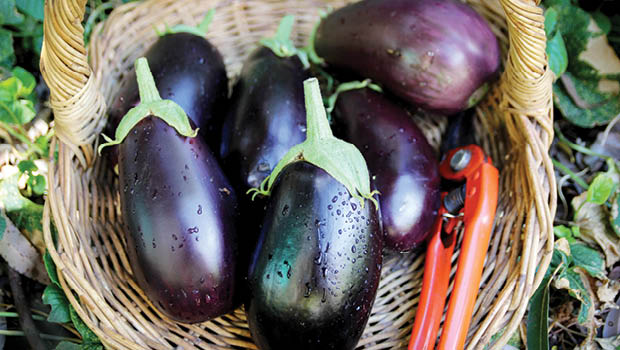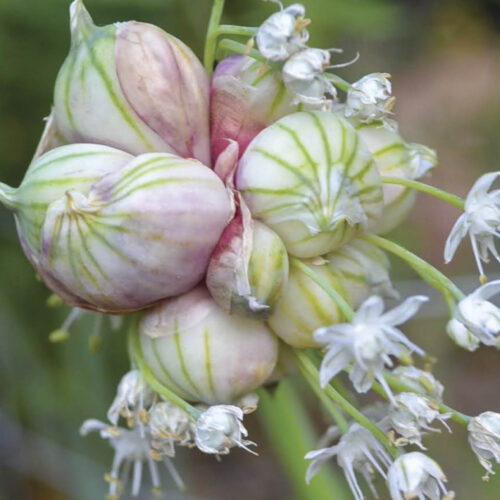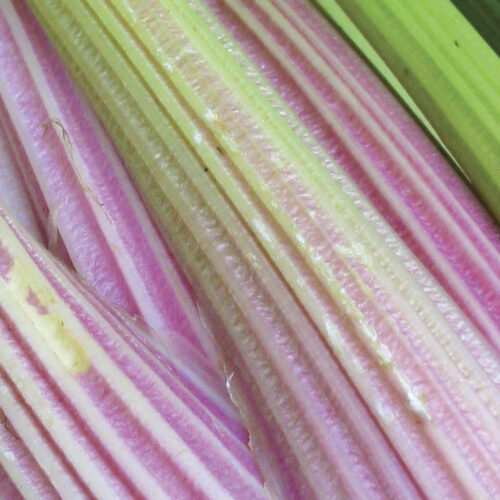Eggplants aplenty!
2017-09-13T14:00:01+10:00
Justin Russell investigates the best eggplant varieties for your garden plus growing, harvesting and storage advice.
Just as humans have migrated across oceans to permanently inhabit every continent on earth except Antarctica, so have food plants. Most cultures eat a combination of native and exotic plants. Sometimes these exotics are from a neighbouring bioregion, but more often than not, they originated in distant lands and made their way to the plate via a complicated journey over many generations.
Eggplant (Solanum melongena), sometimes known as aubergine or brinjal, is a classic case in point. It’s a food synonymous with Greek cuisine, and the Mediterranean in general, but the plant originated thousands of kilometres away in one of the world’s botanical hotspots – eastern India/southwestern China. The earliest written mention of eggplants being cultivated for food was in a 544AD Chinese agricultural treatise. Historians believe that Arab traders working the Silk Route transported the plant to the west, and from the Mediterranean region the Spanish Conquistadors took it to the New World. Eggplants are now one of the most cosmopolitan members of the nightshade (Solanaceae) family of plants.
Despite their ubiquity, they remain the obscure cousins to three more popular members of the Solanaceae family – tomatoes, capsicums and chillies. This is a shame, because eggplant is a worthy food to grow in its own right. It suits a wider range of growing conditions than tomatoes, being equally at home in the wet tropics (such as southeast Asia and northern Australia) and drier, arid regions (such as North Africa and central Australia). It’s less prone to disease, tends to bear heavier crops, and in warm areas, can be successfully grown as a short-lived perennial. Perhaps the only thing holding eggplant back is the widespread knowledge of how to use it in the kitchen and savour it on the plate.
Variety chart
- ‘Black Beauty’ – A standard since 1902 that produces reliable crops of medium–large, almost black, teardrop-shaped fruit. One for all climates.
- ‘Casper’ – A reason to avoid the term “aubergine” this eggplant is small, snow white and friendly like the cartoon ghost. It’s quick to bear, making it ideal for cooler areas.
- ‘Listada de Gandia’ – Probably a Spanish heirloom, bearing early, tender and delicious fruit that are white with strong purple striping.
- ‘Ping Tung’ – Taiwanese in origin and perfect for humid areas, this variety is an abundant producer of slender, purple fruit.
- ‘Rosa Bianca’ – Large, round and mild in flavour, this variety is of Italian origin and has very pretty white skin flushed with pink. Best in areas with long summers.
- ‘Tsakoniki’ – An heirloom from the Greek town of Leonidio, which holds an annual festival to celebrate this incredibly beautiful pink-and-white striped, torpedo-shaped fruit. Best in less humid climates.
- ‘Turkish Orange’ – Round, bright orange fruit striped with green makes this Turkish eggplant a showstopper that’s perfect stuffed and roasted. Best in less humid climates.
For some simple eggplant recipes go to Australian Healthy Food Guide.
For more on eggplants, including how to grow and nurture them, get your copy of Issue 97 Organic Gardener magazine OUT NOW.







